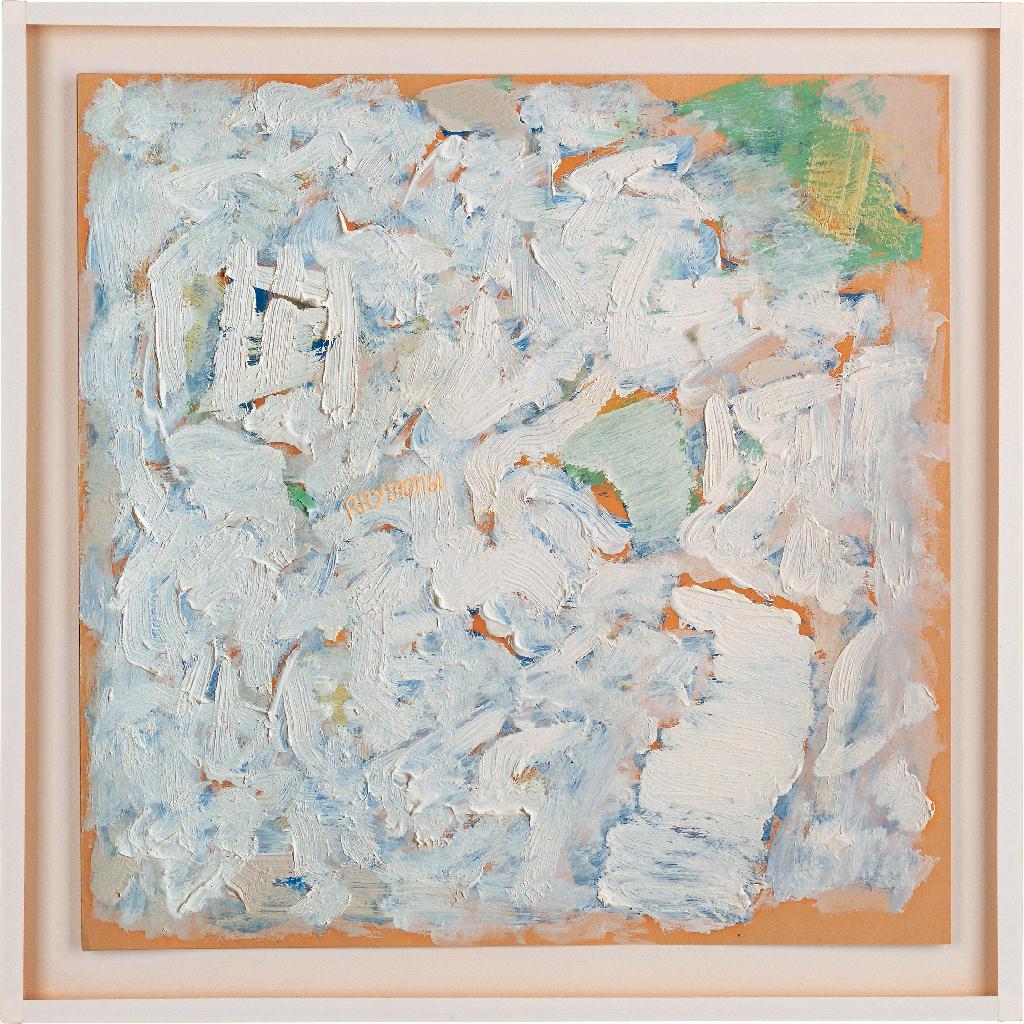Robert RymanWorks on Paper 1957–1966


Past exhibition
Robert Ryman Works on Paper 1957–1966
About the Exhibition
“There is never a question of what to paint, but only how to paint. The how of painting has always been the image—the end product.”
—Robert Ryman, 1969
Robert Ryman (b. 1930) is primarily known for his painted white square canvases. In this exhibition of his early works on paper, the process and development of his later, signature work is revealed. Ryman’s use of white paint as a way to examine the very nature of color and the “act of painting” become the motivation for and the end product of his art. In many of the works Ryman uses a variety of light-colored and translucent paper, including wallpaper, circular coffee filters, newsprint, and mylar, as a surface onto which he applies thick white paint, sometimes over grounds of blue and green paint. The marks he makes signify nothing outside of the paper. The autonomy of art and its ability to be art, art for its own sake, and the performance of the materials are, for Ryman, the work’s primary identity.
Ryman imbues paint with the power to act on its own behalf. The paint is not just a substance provided to cover the paper, and the brush is not just a writing tool. There is no separation between the materials used and the act of making. It is the laying on of the mark, how the paint engages with the surface, and its residual trace that constitute the inherent quality of the artwork. The placement of the mark and the performance of its own making are the end product.
Ryman’s use of square surfaces becomes an important part of his process in his early works. The rectangle, which suggested a landscape to him and so was referential, was banished. His decision to use the square as the correct format for non-narrative work had been set. So too was his signature, which Ryman frequently placed along the side of his work. He made his signature part of the work, used it as a compositional element and as a line.
The exhibition was organized by the Peter Blum Gallery, New York.
About the Artist
Robert Ryman was born in Nashville, Tennessee, and studied music at George Peabody College for Teachers in Nashville. He moved to New York in 1952 and studied with jazz pianist Lenny Tristano. Taking on odd jobs to support himself, Ryman took a position as a security guard at MoMA, NY, in 1953, during which time he made his first paintings. His work was first exhibited in a staff show at MoMA in 1958, and later that year he was included in a group show at the Brata Gallery, NY. In 1961 he began to paint full-time.
Ryman has had solo and retrospective exhibitions at Solomon R. Guggenheim Museum, NY (1972); Stedelijk Museum, Amsterdam (1994); Whitechapel Art Gallery, London (1977); Halle für Internationale neue Kunst, Zurich (1980); Hallen für neue Kunst, Schaffhausen (1983); Espace d’Art Contemporain, Paris (1991); Museo Nacional Centro de Arte Reina Sofía, Madrid (1994); MoMA, NY (1993); San Francisco Museum of Modern Art (1994); Walker Art Center, Minneapolis (1994); and Tate Gallery, London (1994); and participated in Documenta V, Kassel (1972). Ryman was awarded a fellowship from the John Simon Guggenheim Memorial Foundation in 1973 and was elected a member of the American Academy of Arts and Letters in 1994. Ryman currently lives and works in New York.